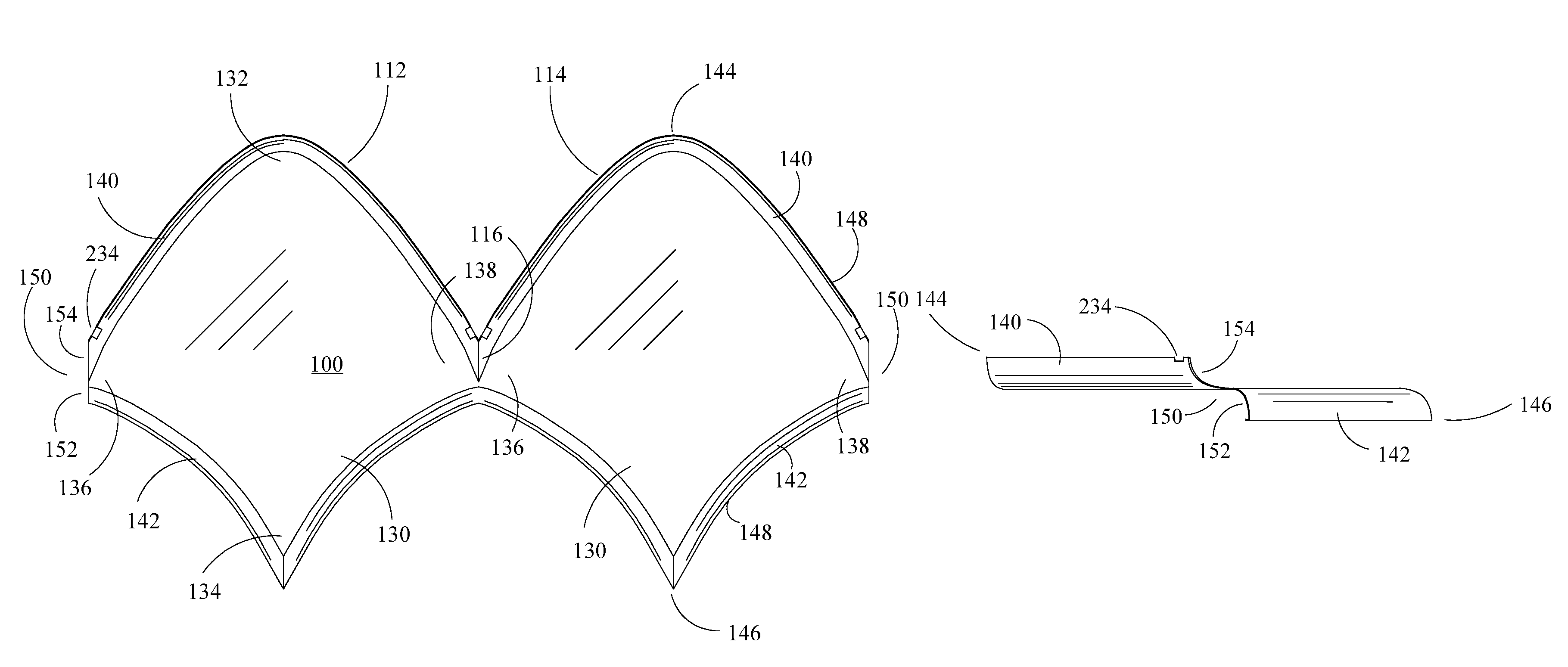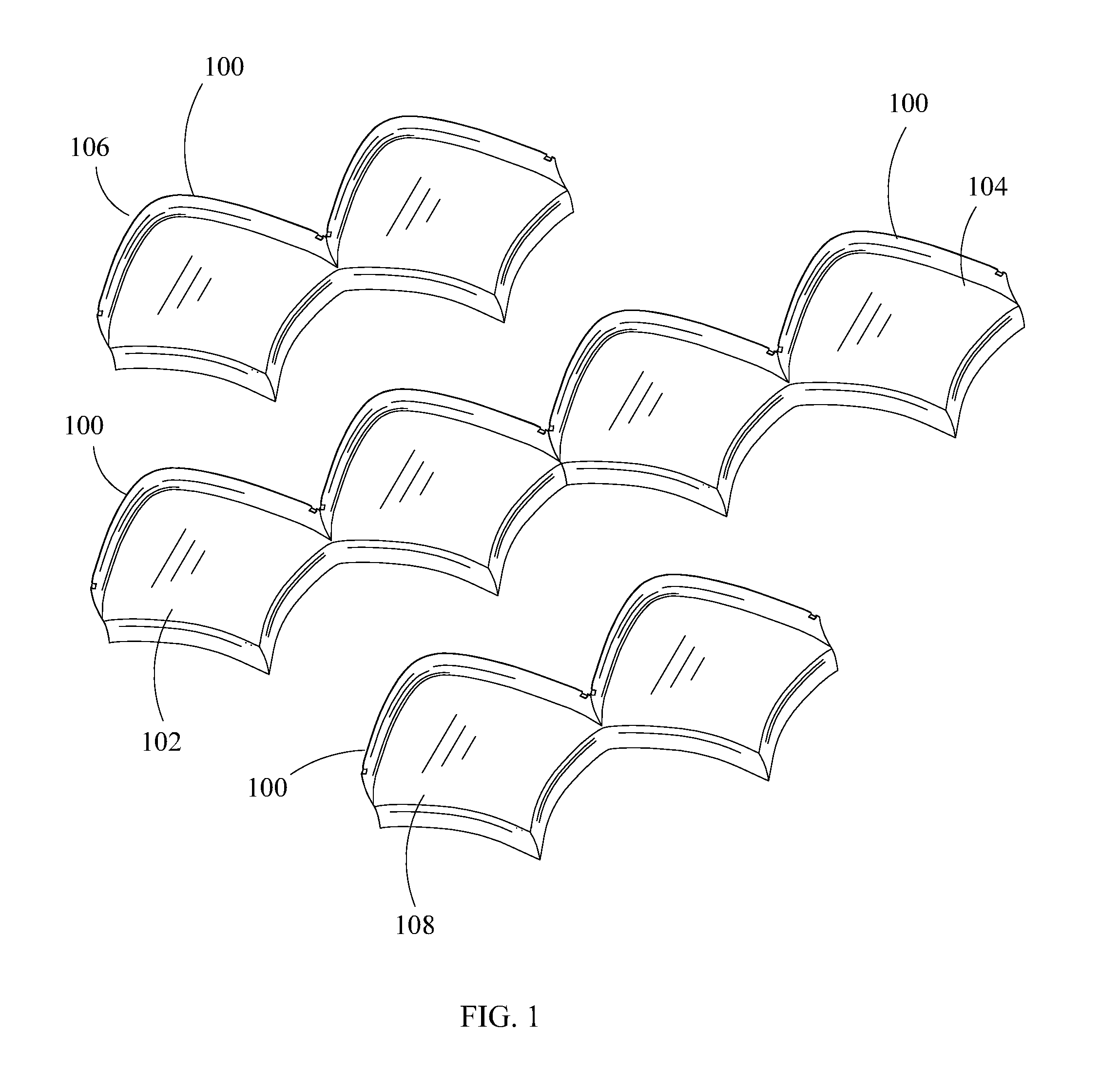Tile and tile assembly for a roof
a technology for roofs and tiles, applied in the field of roof tiles, can solve the problems of reducing the life of roofs, eddies and turbulence with increased wind resistance, and prior art tile types failing to compensate for structural variations of tiles, so as to facilitate the redirection of water, simplify the installation of tiles, and achieve some freedom of installation
- Summary
- Abstract
- Description
- Claims
- Application Information
AI Technical Summary
Benefits of technology
Problems solved by technology
Method used
Image
Examples
Embodiment Construction
[0069]Reference will now be made to the drawings wherein like numerals refer to like parts throughout.
[0070]FIG. 1 illustrates one embodiment of a plurality of diamond patterned tiles 100 for assembly. FIG. 2 illustrates one embodiment of a tile assembly 110 having at least four tiles 100 grouped together in an assembly. FIG. 3 illustrates a plurality of tiles 100 and tile assemblies 110 linked together with adjacent tile assemblies 110 to form a roof 120 of a structure. Roof 120 extends in downwardly inclined planes from either side of a roof line 122. FIG. 4 illustrates a top view of tile 100, FIG. 5 illustrates a bottom view of tile 100 and FIG. 6 illustrates a side view of tile 100. In the following description, a single tile assembly 110 is described, but it will be understood that the flanges of each tile 100 hook over and interlock with the flanges of adjacent tiles 100 in a repeating arrangement of tile assemblies 110 to form roof 120. Each tile 100 has a repeating diamond s...
PUM
 Login to View More
Login to View More Abstract
Description
Claims
Application Information
 Login to View More
Login to View More - Generate Ideas
- Intellectual Property
- Life Sciences
- Materials
- Tech Scout
- Unparalleled Data Quality
- Higher Quality Content
- 60% Fewer Hallucinations
Browse by: Latest US Patents, China's latest patents, Technical Efficacy Thesaurus, Application Domain, Technology Topic, Popular Technical Reports.
© 2025 PatSnap. All rights reserved.Legal|Privacy policy|Modern Slavery Act Transparency Statement|Sitemap|About US| Contact US: help@patsnap.com



